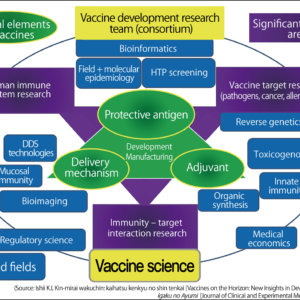Scientists have discovered that the brain has a triple network linked to the mind —— that is to say, feelings and moods. For example, when we are well, our feelings manifest themselves and turn on the “motivation switch” that prioritizes one of these networks. Conversely, these networks are also involved in the fact that pushing our bodies too hard when we feel fatigued can be a cause of psychological problems. The mechanisms linking the brain, the body, and the mind are gradually being uncovered.
Special Feature 1 – Brain, Body, and Mind Triple network of the brain linking mental activity with the body
composition by Yumi Ohuchi
Recent research has revealed that the brain has a triple network (Figure 1). One of these is called the default mode network (DMN), which could be described in simple terms as the “unfocused” network, working while we are in a task-negative state and not concentrating. As you will all have experienced for yourselves, when we are not focusing on anything, various thoughts about the past, present, and future float randomly though our minds, sometimes bringing flashes of inspiration. The DMN is also linked to depression, as we know that its activity is more intense in people suffering from depression.
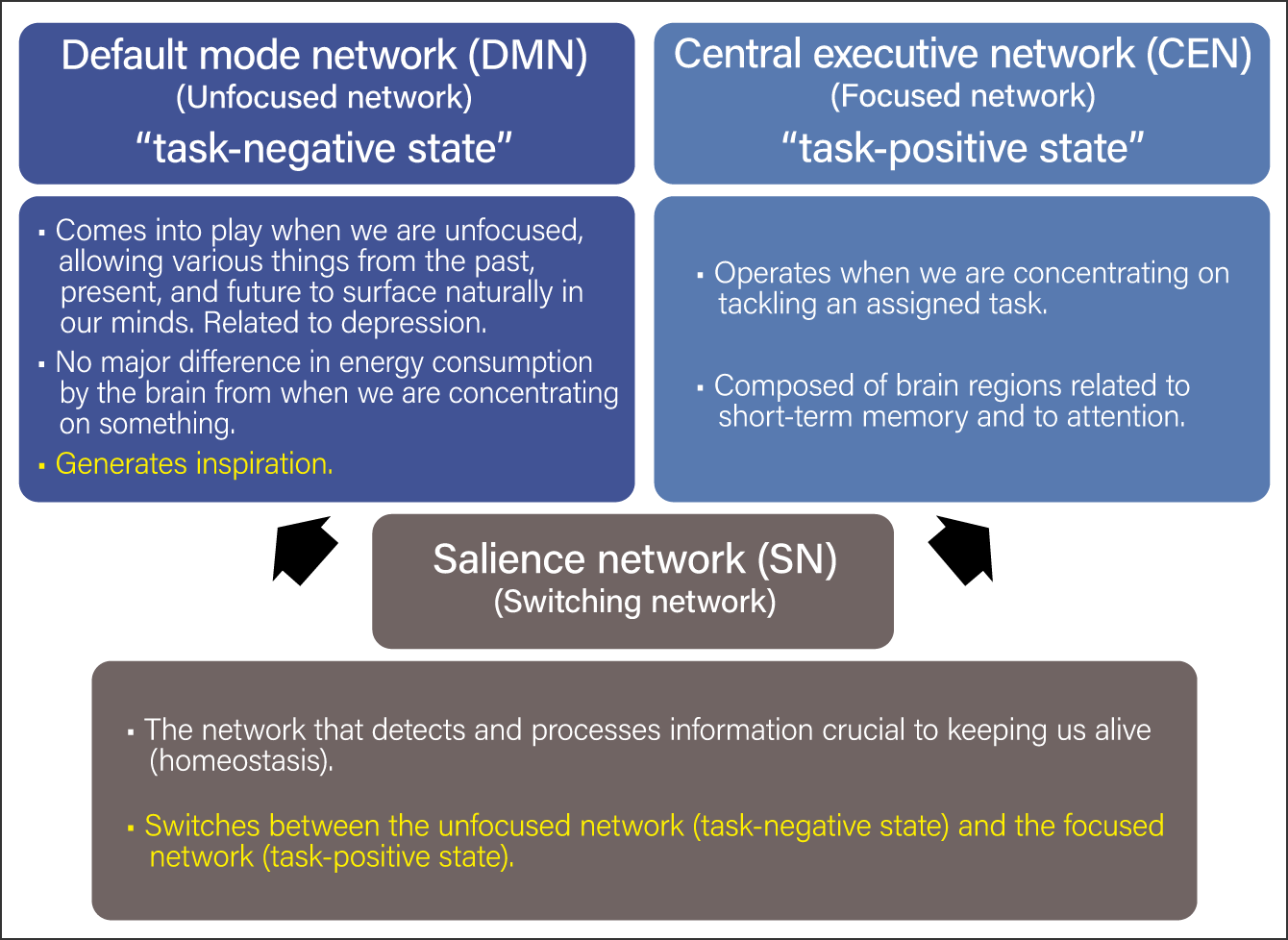
Figure 1. The triple network of the brainRecent studies of the brain have revealed the existence of the SN, which mediates switching between the DMN (task-negative state) and the CEN (task-positive state).
Standing in contrast to this is the central executive network (CEN), which is the “focused” network. It operates when we are in a task-positive state, concentrating on tackling an assigned task. The CEN is composed of brain regions related to short-term memory (memories retained for only a matter of seconds) and those related to attention.
- *1 Attention: A function of the consciousness directed toward selectively reacting to or focusing on a specific part of an object or event in one’s surroundings, or a specific aspect of one’s mental activity.
Interestingly, there is little difference in the energy consumption of these two networks. Even in an off state, our brains are still actively working.
Symptoms of depression may develop when the balance is disturbed
The network that mediates switching between the default mode network (task-negative state) and the central executive network (task-positive state) is called the salience network (SN). One function of this network is detecting and processing important information about changes in our ambient environment for the purpose of homeostasis (sustaining life), to maintain the body in a stable state.
In recent years, scientists have advocated the triple-network model, which holds that our mental state is altered by the relationship between the three networks. We know that people develop symptoms of depression and present a schizophrenic state when the balance between these networks is disturbed, so, the SN that switches between the two networks has a very important function.
A region of the brain called the insular cortex plays the central role in the SN (Figure 2). We know that the insular cortex receives information from the body in the form of peripheral nerve inputs. It is thought that information from the body is sent to the right anterior insula (the front part of the insular cortex in the right hemisphere of the brain), where the body’s physical state is turned into awareness.
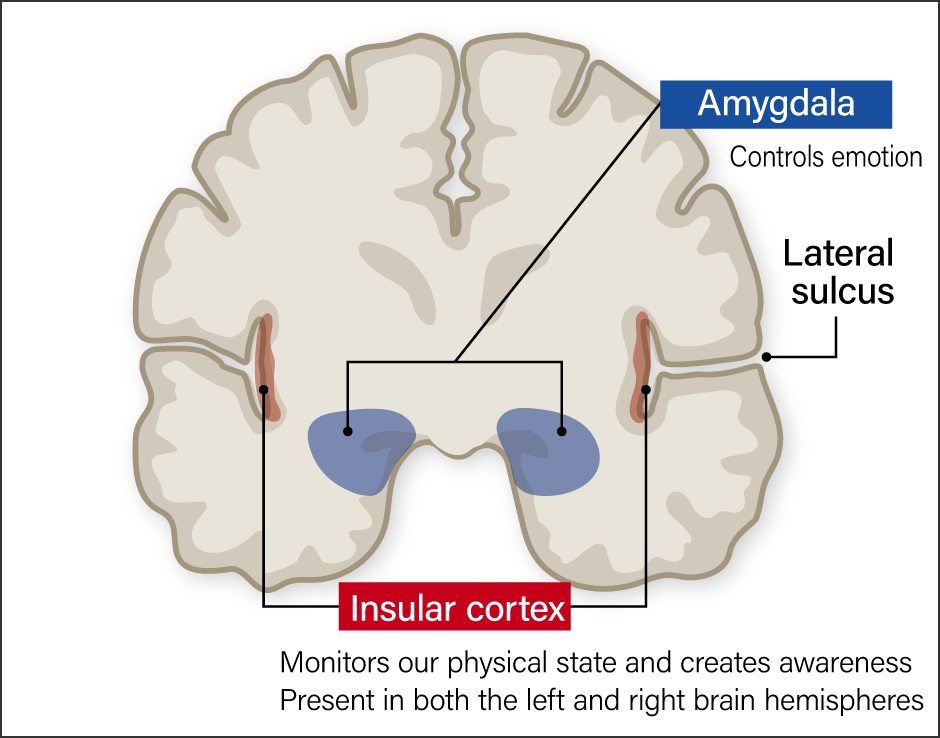
Figure 2. The insular cortex and the amygdalaSectional view looking down at the brain from above. The insular cortices are located deep within the lateral sulci of the cerebrum. The amygdalae are located deep within the medial temporal lobes.
For example, fMRI analysis has revealed the process by which, when our body gives a startled jerk upon seeing a snake, the information is transmitted to the insular cortex in the right and left hemispheres, ultimately reaching the right anterior insula, where we realize that our body jerked because we were startled (formation of awareness). In other words, the insular cortex is a very important region of the brain linking the body with the mind.
- *2 fMRI: Functional magnetic resonance imaging; a method of imaging the functional activity of the brain, such as changes in blood flow, using MRI.
Based on these findings, I propound that the SN switches between the task-positive and task-negative state after detecting the body’s circumstances and turning this information into awareness. This is just a hypothesis, and, my view is that when we are well, eating and sleeping properly, the SN becomes aware and activates the CEN so that it becomes dominant. In contrast, when we are fatigued, the SN becomes aware of our fatigue and switches to the DMN to make us unfocused so that our body rests, thereby keeping us alive. Some reported studies have found that the higher the fatigue level, the stronger the activity of the DMN (Figure 3).
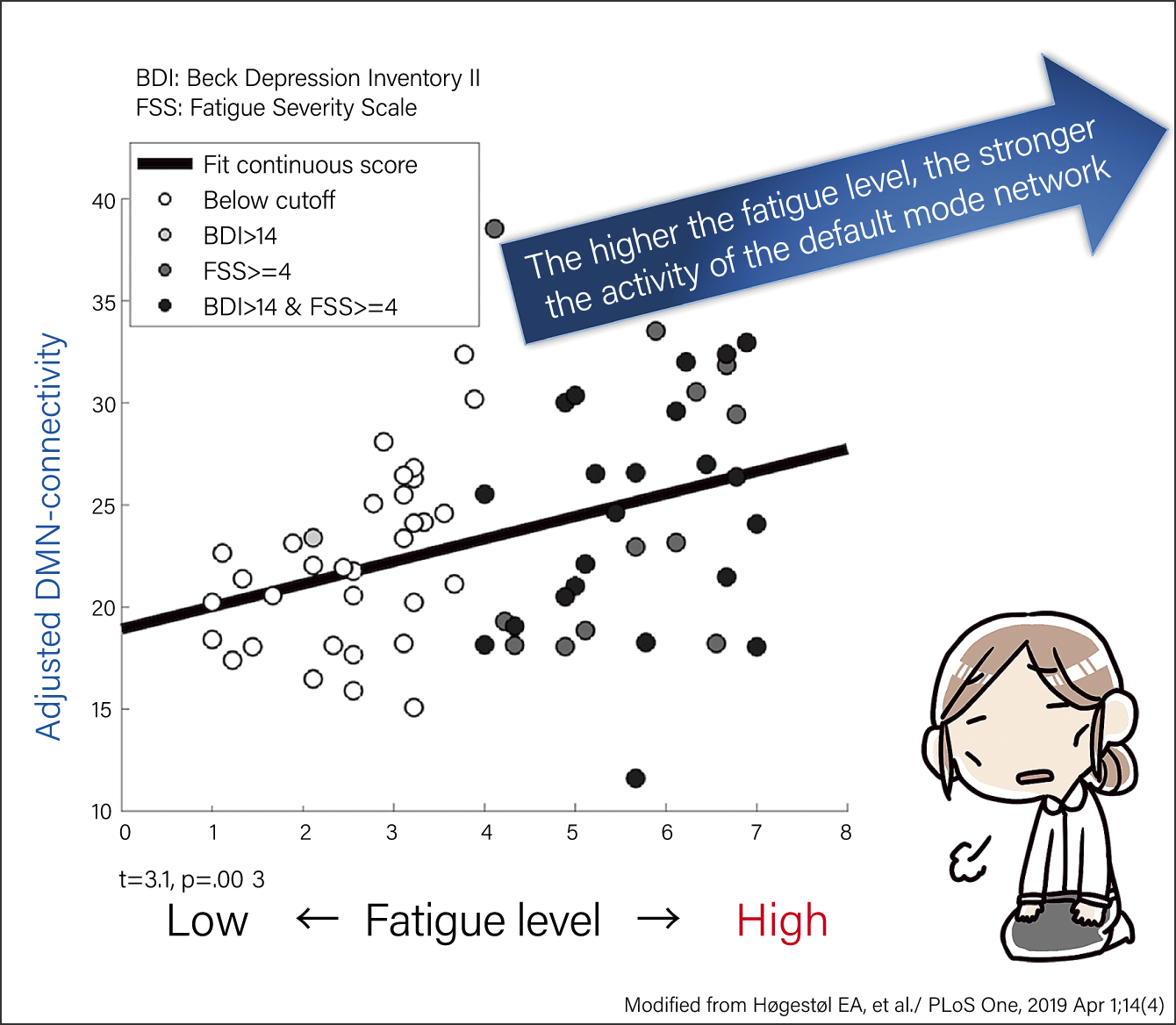
Figure 3. Fatigue and the DMNThis study of patients with the intractable neurological disease multiple sclerosis used fMRI to investigate the correlation between the brain network, fatigue, and symptoms of depression. The results indicated that the higher the fatigue level, the stronger the activity of the DMN.
However, we sometimes force our bodies to be active by an effort of will, such as in cases where we work despite being tired. It is conceivable that suppression of the SN could disturb the balance between the DMN and the CEN, leading to psychological problems. Even more importantly, unlike the other two networks, the SN develops as we age. Accordingly, it is thought that people are more prone to psychological problems particularly if the salience network is over-suppressed in adolescence.
Aside from the insular cortex, the SN also includes the amygdala, a region of the brain related to emotion, and the ventral tegmental area, which is linked to reward. As well as switching between task-positive and task-negative states, the SN is believed to substantially influence motivation and the emotions. If the amygdala is overactive, an individual becomes unable to control their emotions, experiencing anxiety and anger, so this region of the brain is connected by inhibitory nerves running from the cerebral cortex. However, we know that there are more nerve connections (projections) from the amygdala to the cerebral cortex than those running from the cerebral cortex to the amygdala. In other words, the brain’s mechanism is thought to be such that information from the body is more likely to be strongly reflected than an individual’s will. The fact that there are times when we just cannot focus, no matter how much we want to —— something I am sure many of us have experienced —— might indicate that willpower alone is not enough.
Based on all this, it would probably be fair to say that staying in good physical condition by eating, sleeping, and resting properly is vital to improving the functioning of the brain’s networks. Also crucial is exercise. Some studies have reported that the longer we spend exercising each day, the stronger the activity of our CEN, and, conversely, the longer we spend sitting down, the weaker it becomes. Thus, exercise could potentially improve our performance at work and other activities.
Moreover, research focused on seniors found that walking faster strengthened the activity of the SN. Many other studies have reported results suggesting that exercise has a positive effect on the brain.
The insular cortex links the body and the mind
We are conducting basic research focused on the insular cortex, which plays a core role in the SN. In addition to its role in creating awareness of our physical state, the insular cortex is involved in many other functions, such as exercise and cognitive processes, decision-making, perception, and emotion, as it has bilateral connections to a wide range of other regions of the brain, including the frontal lobe (cognition), parietal lobe (attention), temporal lobe (language and hearing), cingulate gyrus (emotion and awareness), amygdala (emotion), and thalamus (transmission of information). Accordingly, we know that damage to the insular cortex due to a stroke, for instance, has a variety of effects.
For example, some studies have reported that, after suffering damage to the right insula due to a stroke, subjects were able to tolerate keeping their hand in iced water for longer. This is thought to be because, although the body feels cold, the damage to the right insula means the information is not turned into awareness. There have been reports that damage to the right increases the success rate to around 80% in those seeking to quit smoking, which is believed to be because the information “I want a cigarette” is blocked.
Recent studies have also found that the insular cortex is closely involved in prediction and anticipation. For example, if we measure brain waves when someone shouts, “Get set, go!” to start a race, a gradual change in electric potential (slow potential) emerges between the “Get set” instruction to get ready and the “go!” signal to start running. The principal source of this slow potential is believed to be the insular cortex. Accordingly, we conducted a study to see how slow potential changed in response to different sonic stimuli in the form of a human voice, a melody, and a beep, with the test subjects informed in advance which sonic stimulus would be forthcoming.
The results showed that the amplitude of the slow potential increased from the moment the subject learned that they would hear a voice, compared with when they were told they would hear a melody or a beep (Figure 4). We also found that the amplitude of the brain wave (P3) reflecting how much information was processed in the brain after the sound was presented was biggest of all when the subject heard a voice (Figure 5). This shows that we elicit more information from a voice. We have conducted similar research using visual stimuli such as headshots, text, and symbols, which showed that similar brain wave changes occur when we see headshots. Human voices and faces are important information for us, requiring a great deal of information to be processed. We believe the brain therefore prepares for this information before receiving it.

Figure 4. Differences in brain waves related to anticipationFeedback stimulus (FB) in the form of either a voice, a melody, or a beep was presented at the 2000 ms point. In the case of the voice stimulus, slow potential amplitude increased compared with the melody and the beep 1–1.5 seconds before that point.
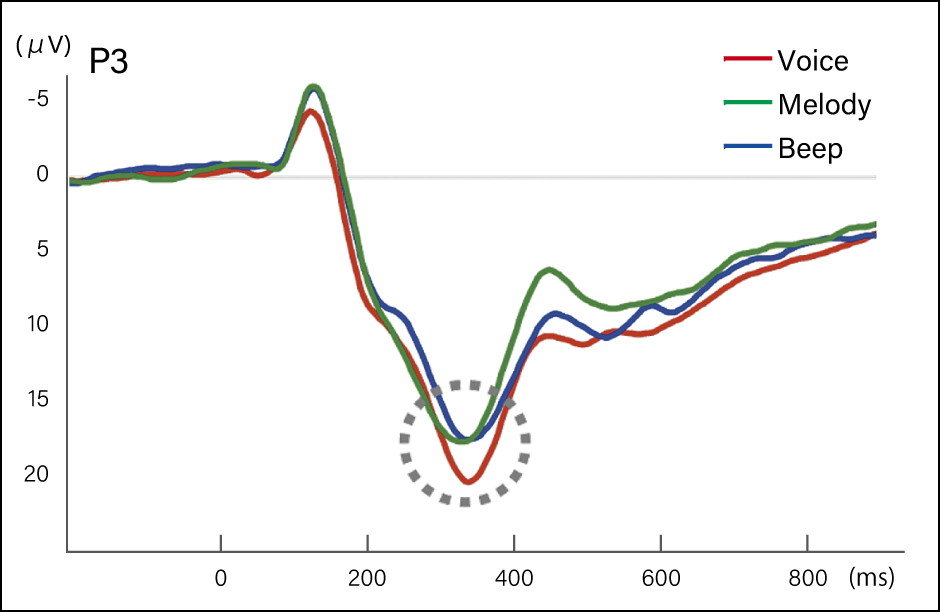
Figure 5. Differences in brain waves (P3) reflecting the amount of information processed in the brainP3 is the brain wave that emerges immediately after the stimulus is provided. It reflects the amount of information processed in the brain. The amplitude is bigger when the subject has heard a voice.
Prediction and anticipation are crucial abilities enabling humans to act swiftly and accurately. It is thought that the insular cortex not only switches between networks, but also creates awareness of our physical state, while serving as a switching center that anticipates and coordinates our next actions. Staying in good physical condition also seems likely to be vital to enhancing the functions of the insular cortex in prediction and anticipation.
Our physical state influences our brain
However, the pandemic makes it difficult to keep our bodies in shape. The lack of exercise due to people working from home is a particular problem. According to the results of a survey by a research company, the average amount of calories burned while commuting by an office worker in the Kanto region is approximately 569 kcal, which is the equivalent of an hour’s running, so, most people get their exercise from commuting. There are concerns about the effects on our mind when we get less exercise, and circadian rhythm is thrown off-balance. Reports from research overseas suggest that the disruption of circadian rhythm caused by lockdown have been a major cause in the deterioration of mental health. Under these circumstances, it is vital for us to be creative in devising ways to incorporate exercise into our lifestyles.
As we believe the human mind is located in the brain, we are inclined to think of the brain first. However, as I have explained above, it is our physical condition that influences brain activity in quite a few cases. In addition to the basic research we have conducted to date, I want to develop a simpler measurement method than using brain waves or fMRI, so that we can shed light on how the workings of the mind and the activity of the brain relate to each other and identify how the body intervenes in mental and brain activity.










